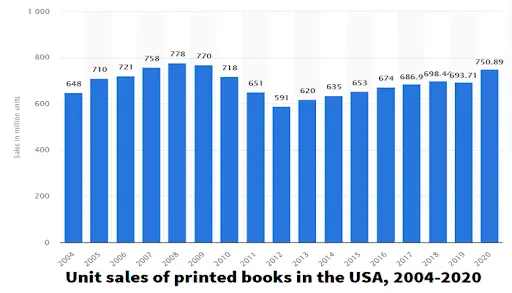Author: FWJ
Go to Source
The Harvard
Business Review Entrepreneur's Handbook: Everything You Need to Launch
and Grow Your New Business 

Free $0.00 Amazon
As all writers of books know, there are two things you need to achieve success: a great story and a publisher ready to take a chance on it. Many writers find the second part harder than the first, but we’re on hand to help.
Many popular authors have written book series, so we’re going to share the seven steps that will help you create those all-important book series outlines that will lead to a series that both readers and publishers love.
Why Is a Book Outline so Important?
Whether you’ve written a stand-alone novel or part of a series, the outline of your book is vitally important. Nearly every great writer has known how to plan their book meticulously, even if the methods used may vary from one author to the next.
This planning is even more important when you intend to write not one but several books. The extra volumes inevitably increase the potential plot tangles and writer errors, so take a look at these seven steps which will help your literary path run more smoothly.
1. Utilize the Latest Software
People have been writing books for centuries, but one advantage we have over Homer and scribes of old is that we can boot up our computer and use it to make our writing lives a little easier. There are websites, apps, and software packages that help with almost every step of the writing process, and that also goes for outlining.
A storyboard creator can be incredibly useful throughout all stages of the writing process. They make it easy to keep track of characters and storylines and make a perfect accompaniment to the traditional pen and paper. Think of it as visual voicemail for your writing brain. What is visual voicemail? It’s a physical prompt that’s always there, rather than relying on memory to keep track of multiple books and hundreds of pages.
2. Start With a Broad Outline
The longest journey starts with a single step, but it helps to know in which direction you’re going to walk. Don’t try to put down too much detail in the initial phase of planning and outlining, but instead create a broad outline of the series as a whole.
At this stage the details you should be considering include the following:
- How many books will be in the series?
- What will their titles be? (they may change, but adding titles can help kickstart your creativity)
- Who will be the main characters?
- How will the series start and end?
- Will there be a main story arc that continues throughout the series?
These details are basic, but they’re also important and form the framework upon which everything else can then be placed.
3. Character Creation
With the broad framework in place, you can now start to add some of the finer detail. A great place to start is with your characters – after all, it’s they who will grab the readers’ attention and move your story forward.
Think about the motivation for each character, and also what makes them stand out from others who will appear throughout your novels. Also consider what would make them stand out visually if you met them, and ways to put this down on the page.
4. Briefly Plot Each Book
If you have a finite series in mind, then you should already know the titles of each volume. (See step two.) As your outlining continues it now becomes time to plot each book in turn. Once again it makes sense to create a brief rather than a dense outline at this point, as the story is likely to change in some ways during the writing process.
By knowing what lays ahead in future books, even in brief detail, you can ensure that storylines remain on course. This future outlining is akin to online appointment scheduling for your characters, ensuring they are in the right place at the right time.
5. Concentrate on One Book at a Time
Well-written book series are always popular in all genres; just think of the Harry Potter books of J. K. Rowling or the Discworld books of Terry Pratchett. Conceiving the idea of a book series can be an exciting and revelatory experience, and once the initial outlines are in place, as above, you should concentrate on one book at a time.
Distractions leading to writer’s block are the enemy of all writers, both experienced and inexperienced alike. Thinking ahead to book eight for when working on book one can be one of the biggest distractions of them all. Talking of distractions, turn off the TV and switch off your phone, or use phone forwarding when you’re in writing mode. If possible, set aside certain hours each day which are for writing and nothing else.
6. Reach Out for Help
Writing can often be a solitary experience, but for the best results, it always helps to have someone you can reach out to. That may be your partner or a good friend; someone you can talk to in person and use as a sounding board or draft reader.
Whilst the opinions of those we love are always important, it’s beneficial to get an impartial view too. Look for opportunities to connect with book bloggers or those in the publishing industry. Daily stand-up solutions for online meetings can help you talk to these people with confidence and professionalism, allowing you to get feedback that could prove to be invaluable.
7. Unify Your Storyline
Your final process when outlining a book series is to unify your storyline across the whole set of novels. It’s a big challenge: each book has to stand on its own merit, whilst also moving the series story arc forward. Big challenges, however, can bring big rewards.
Take a look at the series as a unified whole. From this holistic viewpoint, there should still be the basis of all outlines: the initial setup; character introductions and developments; a mid-point hook; a late twist; and finally, a series climax that ends up resolving elements that were first seen in the first novel. Achieve this, and you have a great book series. Remember that printed book sales are rising again, with a growth of over 8% in the US market in 2020; it’s a great time to be a novelist.
Unit sales of printed books in the USA, 2004 – 2020 graph: Image Source
Your Final Step
Your final step is to approach a publisher (unless you have decided to self-publish.) Don’t be afraid to seek out more customer feedback before this point, using it as a CCaaS platform that gauges reader engagement and satisfaction. If changes are needed, make them ruthlessly.
So there you have it. Your book series is outlined, and your hands are hovering over the keyboard. There’s never been a better day to start writing novels that could change your life.
About the author:
Jenna Bunnell – Senior Manager, Content Marketing, Dialpad
Jenna Bunnell is the Senior Manager for Content Marketing at Dialpad, an AI-incorporated cloud-hosted call recording and unified communications system that provides customer engagement strategies for business owners and sales representatives. She is driven and passionate about communicating a brand’s design sensibility and visualizing how content can be presented in creative and comprehensive ways. Here is her LinkedIn.




